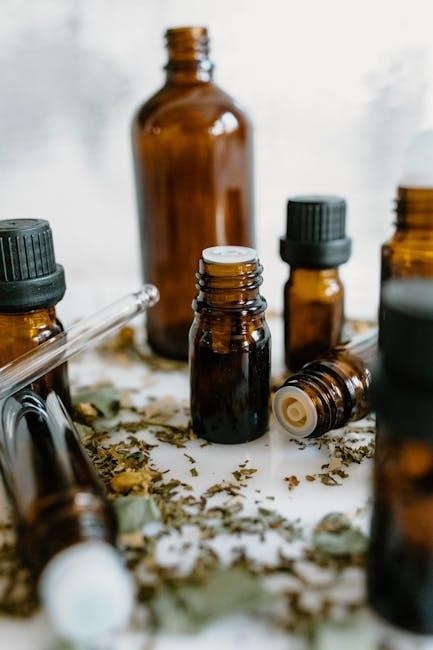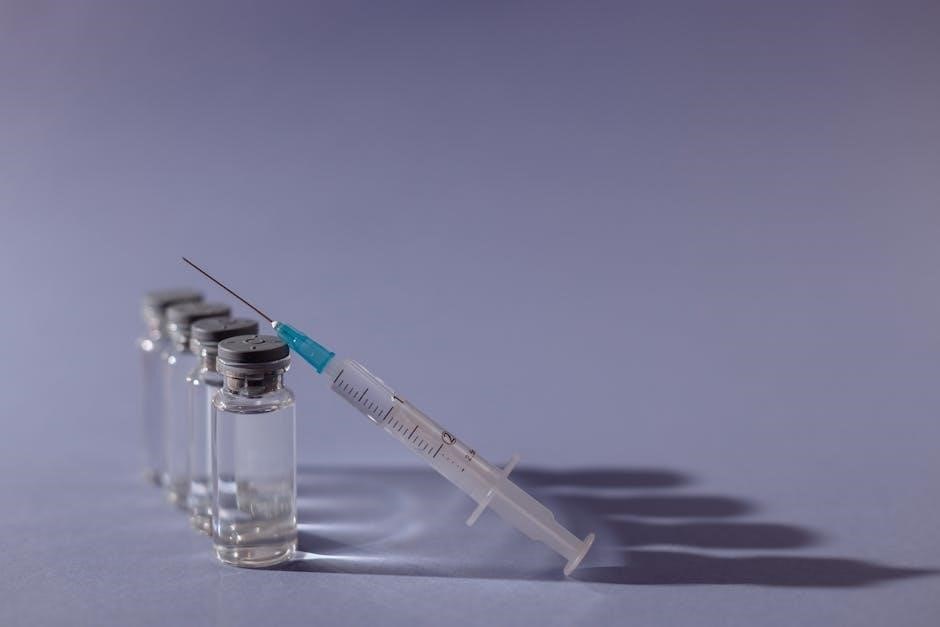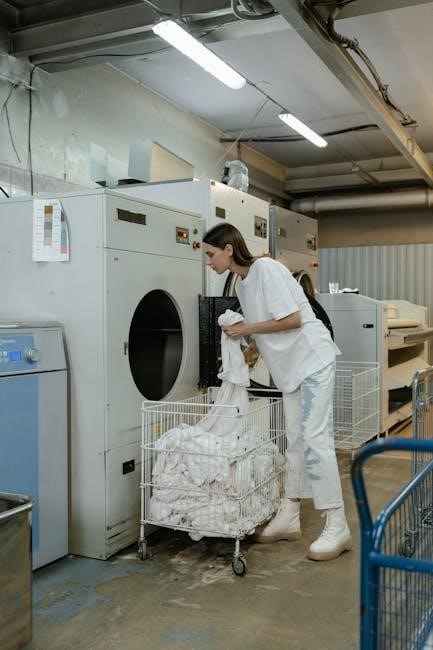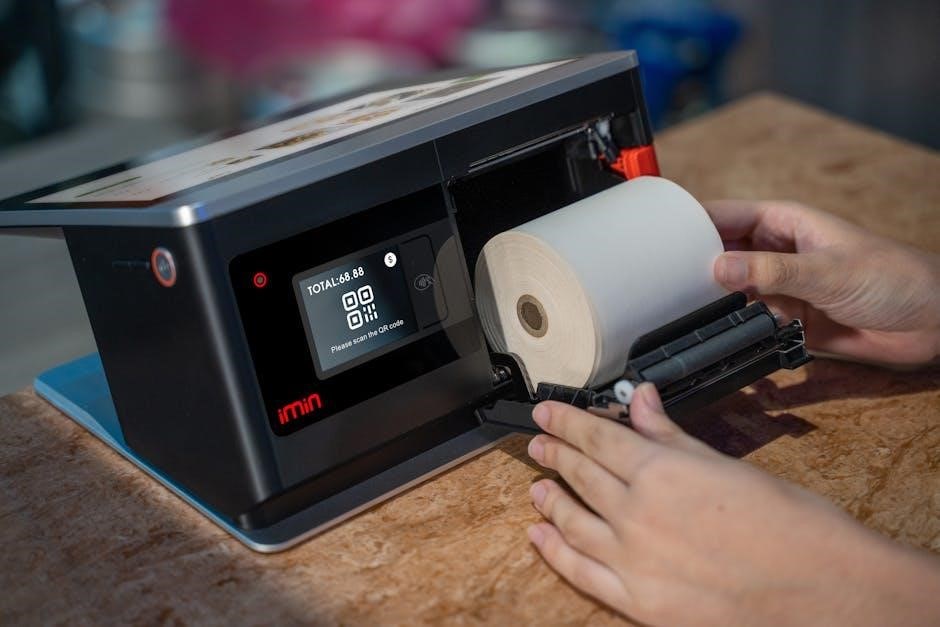Food Safety Level 2 provides essential knowledge on hygiene, legal responsibilities, and hazard control. It equips food handlers with the skills to maintain safe practices, ensuring compliance with industry standards and regulations.

Overview of Food Safety Level 2 Certification
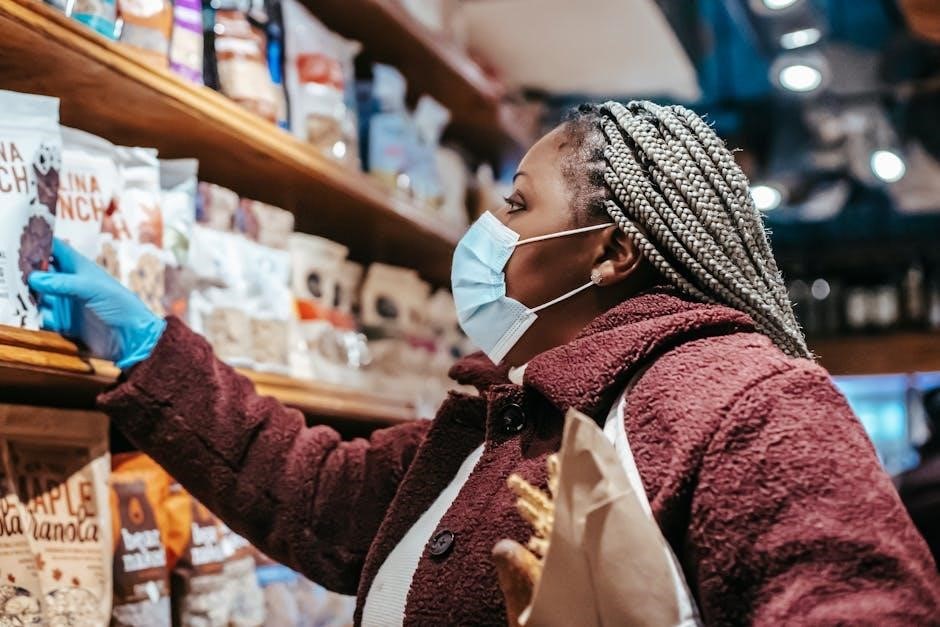
Food Safety Level 2 Certification is a foundational program designed for individuals handling food in various industries. It focuses on essential principles, including food safety hazards, personal hygiene, and legal responsibilities. The certification ensures that food handlers understand how to maintain safe practices, control risks, and comply with food safety laws. It is particularly relevant for roles such as food handlers, chefs, and managers in restaurants, cafes, and food production facilities. The course covers key topics like preventing contamination, safe food storage, and cleaning procedures. Many programs include practical assessments and exams to verify knowledge retention. Obtaining this certification demonstrates a commitment to upholding high food safety standards, which is critical for protecting consumer health and avoiding legal penalties. It also serves as a stepping stone for advanced food safety qualifications. By completing this certification, individuals contribute to a safer and more reliable food industry environment.
Importance of Food Safety Training in the Food Industry
Food safety training is crucial for ensuring the well-being of consumers and maintaining the integrity of the food industry. It equips workers with the knowledge to identify and control hazards, preventing foodborne illnesses and potential legal repercussions. Proper training also fosters a culture of safety within organizations, reducing risks associated with contamination and poor handling practices. By understanding their legal responsibilities, employees can adhere to regulations and uphold industry standards. Moreover, effective training enhances operational efficiency, as it minimizes waste and ensures compliance with quality control measures. Ultimately, investing in food safety training protects both public health and the reputation of food establishments, making it a vital component of any food-related business. It ensures that all staff, from handlers to managers, contribute to a safe and reliable food supply chain.

Key Concepts in Food Safety Level 2

Key Concepts in Food Safety Level 2 include understanding hazards, legal responsibilities, and best practices. Topics cover safe handling, hygiene, and controlling risks to ensure a safe food environment.
Understanding Food Safety Hazards and Risks
Understanding food safety hazards and risks is crucial for maintaining safe food environments. Hazards include biological, chemical, and physical contaminants that can cause illness if not controlled. Biological hazards, such as bacteria, viruses, and parasites, are among the most common and dangerous. Chemical hazards may come from cleaning agents or food additives, while physical hazards like glass or metal fragments can cause injury. Assessing these risks involves identifying potential sources of contamination and implementing measures to prevent them. Proper training, such as through Level 2 Food Safety Certification, helps food handlers recognize and mitigate these hazards effectively. By understanding the risks, individuals can take proactive steps to ensure food safety, protecting both consumers and the business from potential harm.
Legal Responsibilities of Food Handlers
Food handlers have specific legal responsibilities to ensure food safety and compliance with regulations. They must adhere to the Food Safety Act 1990 and other relevant laws, which mandate proper handling, storage, and preparation of food. Handlers are required to report any illness or condition that could contaminate food, such as vomiting or infections. Employers must provide adequate training, and employees must follow safe practices, including proper hygiene and cleanliness. Non-compliance can result in legal action, fines, or business closure. Understanding these responsibilities is essential for maintaining a safe food environment and protecting public health. Legal obligations also include accurate food labeling and adherence to temperature controls to prevent bacterial growth. By fulfilling these duties, food handlers contribute to a safe and trustworthy food industry.
Best Practices for Maintaining Food Safety Standards
Maintaining food safety standards requires consistent adherence to best practices. Proper handwashing, using separate utensils for raw and cooked foods, and storing food at correct temperatures are essential. Regular cleaning and sanitizing of equipment and surfaces prevent contamination. Food handlers should avoid cross-contamination by segregating raw, cooked, and ready-to-eat foods. Personal hygiene, including wearing clean uniforms and covering hair, is crucial. Employers must ensure staff are trained on food safety protocols and understand their legal responsibilities. Implementing HACCP (Hazard Analysis Critical Control Point) systems helps identify and manage risks. Proper waste disposal and pest control measures also contribute to a safe food environment. Regular audits and inspections ensure compliance with food safety standards. By following these practices, food handlers can significantly reduce the risk of foodborne illnesses and maintain customer trust in the food industry.
Common Questions and Answers in Food Safety Level 2

Explore frequently asked questions and answers on food safety practices, legal responsibilities, and hazard control. These resources help food handlers build confidence and reinforce good hygiene habits effectively.

What Constitutes Safe Food Handling Practices?

Safe food handling practices involve measures to prevent contamination, ensuring food is stored, prepared, and served safely. Key practices include proper handwashing, using separate utensils for raw and cooked foods, and maintaining correct storage temperatures. Regular cleaning of surfaces and equipment is essential to eliminate pathogens. Food handlers should also avoid touching ready-to-eat foods with bare hands and ensure all ingredients are within their use-by dates. Personal hygiene, such as wearing clean uniforms and covering hair, plays a crucial role. Additionally, foods should be cooked to the recommended internal temperature to kill harmful bacteria. These practices not only protect consumer health but also comply with legal requirements. By following these guidelines, food handlers can significantly reduce the risk of foodborne illnesses and maintain high food safety standards in any food industry setting. Consistent training and awareness are vital to uphold these practices effectively.
How to Identify and Control Food Safety Hazards
Identifying and controlling food safety hazards are critical steps in maintaining a safe food environment. Hazards can be biological, chemical, or physical, and they must be identified at every stage of food handling. Regular inspections and monitoring of food sources, storage, and preparation areas help detect potential risks. Control measures include proper food storage at correct temperatures, thorough cooking to kill pathogens, and preventing cross-contamination by using separate equipment for raw and ready-to-eat foods. Cleaning and sanitizing surfaces and utensils regularly are also essential. Staff training plays a key role in recognizing and managing hazards effectively. By implementing these controls, food handlers can minimize risks and ensure food safety. Regular audits and reviews of safety practices further reinforce these measures, helping to maintain high standards and protect consumers from foodborne illnesses. Understanding and applying these principles is fundamental for anyone involved in food preparation and service. Proper training and awareness are essential for success.
Role of Personal Hygiene in Food Safety

Personal hygiene plays a vital role in food safety by preventing the spread of harmful pathogens. Proper handwashing is essential, especially before handling food, after using the restroom, and after touching raw ingredients. Food handlers should avoid wearing jewelry, as it can harbor bacteria. Wearing clean, protective clothing, such as gloves and aprons, helps maintain hygiene standards. Additionally, anyone with illness or open wounds should not handle food to prevent contamination. Regular health checks and good grooming practices, like keeping nails clean and avoiding strong perfumes, are also important. Employers must ensure that staff adhere to these hygiene practices through proper training and supervision. By maintaining high personal hygiene standards, food handlers can significantly reduce the risk of foodborne illnesses and ensure a safe food environment for consumers. Cleanliness is a cornerstone of food safety and must be prioritized at all times. Proper practices protect both customers and the reputation of the food establishment. Regular audits and reminders reinforce these habits. Effective personal hygiene practices are essential for maintaining food safety standards and preventing contamination. They ensure that food is handled safely and remain a critical component of food safety training. By adhering to these guidelines, food handlers can contribute to a safer and healthier food environment. Cleanliness is a shared responsibility that requires consistent effort and awareness. Proper handwashing techniques, such as using soap and water for at least 20 seconds, are emphasized in food safety training. Ensuring that all staff understand and practice these habits is crucial for preventing foodborne illnesses. Personal hygiene practices are non-negotiable in the food industry, as they directly impact public health and safety. Employers must provide the necessary resources, such as handwashing stations and protective gear, to support these practices. Regular monitoring and feedback help maintain high standards of personal hygiene. Food safety begins with the people handling the food, making personal hygiene a top priority. Proper training and awareness are key to ensuring that all food handlers understand their role in maintaining food safety. Personal hygiene practices are fundamental to preventing contamination and ensuring that food is safe for consumption. By prioritizing cleanliness, food handlers can protect public health and maintain the integrity of the food industry. Regular health checks and good grooming practices, like keeping nails clean and avoiding strong perfumes, are also important. Employers must ensure that staff adhere to these hygiene practices through proper training and supervision. By maintaining high personal hygiene standards, food handlers can significantly reduce the risk of foodborne illnesses and ensure a safe food environment for consumers. Cleanliness is a cornerstone of food safety and must be prioritized at all times. Proper practices protect both customers and the reputation of the food establishment. Regular audits and reminders reinforce these habits. Effective personal hygiene practices are essential for maintaining food safety standards and preventing contamination. They ensure that food is handled safely and remain a critical component of food safety training. By adhering to these guidelines, food handlers can contribute to a safer and healthier food environment. Cleanliness is a shared responsibility that requires consistent effort and awareness. Proper handwashing techniques, such as using soap and water for at least 20 seconds, are emphasized in food safety training. Ensuring that all staff understand and practice these habits is crucial for preventing foodborne illnesses. Personal hygiene practices are non-negotiable in the food industry, as they directly impact public health and safety. Employers must provide the necessary resources, such as handwashing stations and protective gear, to support these practices. Regular monitoring and feedback help maintain high standards of personal hygiene. Food safety begins with the people handling the food, making personal hygiene a top priority. Proper training and awareness are key to ensuring that all food handlers understand their role in maintaining food safety. Personal hygiene practices are fundamental to preventing contamination and ensuring that food is safe for consumption. By prioritizing cleanliness, food handlers can protect public health and maintain the integrity of the food industry. Regular health checks and good grooming practices, like keeping nails clean and avoiding strong perfumes, are also important. Employers must ensure that staff adhere to these hygiene practices through proper training and supervision. By maintaining high personal hygiene standards, food handlers can significantly reduce the risk of foodborne illnesses and ensure a safe food environment for consumers. Cleanliness is a cornerstone of food safety and must be prioritized at all times. Proper practices protect both customers and the reputation of the food establishment. Regular audits and reminders reinforce these habits. Effective personal hygiene practices are essential for maintaining food safety standards and preventing contamination. They ensure that food is handled safely and remain a critical component of food safety training. By adhering to these guidelines, food handlers can contribute to a safer and healthier food environment. Cleanliness is a shared responsibility that requires consistent effort and awareness. Proper handwashing techniques, such as using soap and water for at least 20 seconds, are emphasized in food safety training. Ensuring that all staff understand and practice these habits is crucial for preventing foodborne illnesses. Personal hygiene practices are non-negotiable in the food industry, as they directly impact public health and safety. Employers must provide the necessary resources, such as handwashing stations and protective gear, to support these practices. Regular monitoring and feedback help maintain high standards of personal hygiene. Food safety begins with the people handling the food, making personal hygiene a top priority. Proper training and awareness are key to ensuring that all food handlers understand their role in maintaining food safety. Personal hygiene practices are fundamental to preventing contamination and ensuring that food is safe for consumption. By prioritizing cleanliness, food handlers can protect public health and maintain the integrity of the food industry. Regular health checks and good grooming practices, like keeping nails clean and avoiding strong perfumes, are also important. Employers must ensure that staff adhere to these hygiene practices through proper training and supervision. By maintaining high personal hygiene standards, food handlers can significantly reduce the risk of foodborne illnesses and ensure a safe food environment for consumers. Cleanliness is a cornerstone of food safety and must be prioritized at all times. Proper practices protect both customers and the reputation of the food establishment. Regular audits and reminders reinforce these habits. Effective personal hygiene practices are essential for maintaining food safety standards and preventing contamination. They ensure that food is handled safely and remain a critical component of food safety training. By adhering to these guidelines, food handlers can contribute to a safer and healthier food environment. Cleanliness is a shared responsibility that requires consistent effort and awareness. Proper handwashing techniques, such as using soap and water for at least 20 seconds, are emphasized in food safety training. Ensuring that all staff understand and practice these habits is crucial for preventing foodborne illnesses. Personal hygiene practices are non-negotiable in the food industry, as they directly impact public health and safety. Employers must provide the necessary resources, such as handwashing stations and protective gear, to support these practices. Regular monitoring and feedback help maintain high standards of personal hygiene. Food safety begins with the people handling the food, making personal hygiene a top priority. Proper training and awareness are key to ensuring that all food handlers understand their role in maintaining food safety. Personal hygiene practices are fundamental to preventing contamination and ensuring that food is safe for consumption. By prioritizing cleanliness, food handlers can protect public health and maintain the integrity of the food industry. Regular health checks and good grooming practices, like keeping nails clean and avoiding strong perfumes, are also important. Employers must ensure that staff adhere to these hygiene practices through proper training and supervision. By maintaining high personal hygiene standards, food handlers can significantly reduce the risk of foodborne illnesses and ensure a safe food environment for consumers. Cleanliness is a cornerstone of food safety and must be prioritized at all times. Proper practices protect both customers and the reputation of the food establishment. Regular audits and reminders reinforce these habits. Effective personal hygiene practices are essential for maintaining food safety standards and preventing contamination. They ensure that food is handled safely and remain a critical component of food safety training. By adhering to these guidelines, food handlers can contribute to a safer and healthier food environment. Cleanliness is a shared responsibility that requires consistent effort and awareness. Proper handwashing techniques, such as using soap and water for at least 20 seconds, are emphasized in food safety training. Ensuring that all staff understand and practice these habits is crucial for preventing foodborne illnesses. Personal hygiene practices are non-negotiable in the food industry, as they directly impact public health and safety. Employers must provide the necessary resources, such as handwashing stations and protective gear, to support these practices. Regular monitoring and feedback help maintain high standards of personal hygiene. Food safety begins with the people handling the food, making personal hygiene a top priority. Proper training and awareness are key to ensuring that all food handlers understand their role in maintaining
Understanding the Exam Format and Requirements

Preparing for the Food Safety Level 2 Exam
Preparing for the Food Safety Level 2 exam requires thorough study of key topics. Utilize practice questions and study guides to ensure readiness. Focus on understanding legal responsibilities and hazard control.







